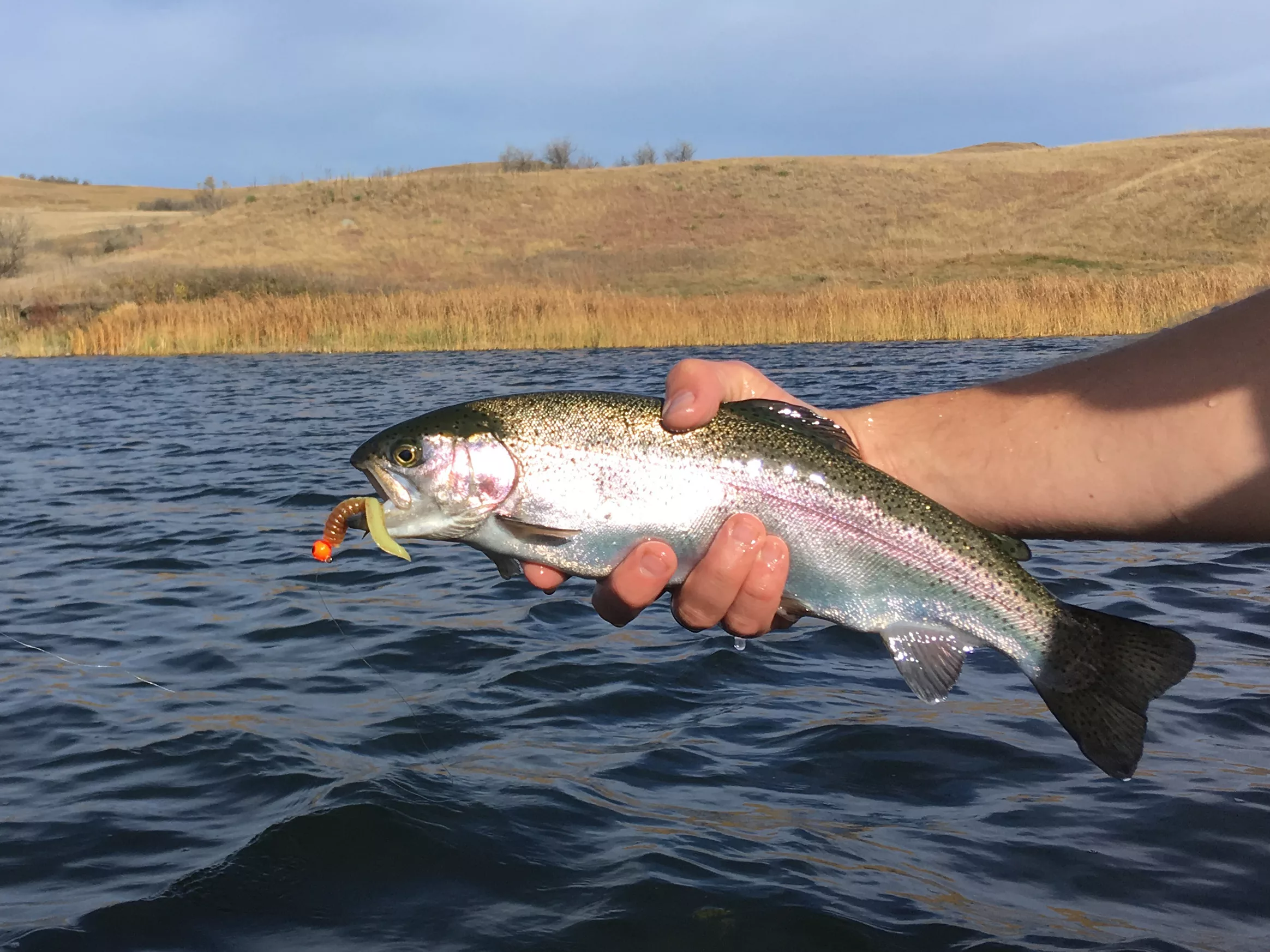
Stocked trout come back to the cooling shallows when the green of summer gives way to autumn’s brown grasses. Be ready to find them as summer fades and fall settles in, and have a travel rod and a stash of tackle on hand to mix things up! Simonson Photo.
By Nick Simonson
Late summer brings with it fast fishing, but it can provide challenging conditions as well. Gearing up for the home stretch of the season and the start of fall, which produces some of the biggest and fastest bites of the year, requires anglers to rethink some strategies, remain persistent on others and focus on the weather and moon factors that influence fishing this time of year. What follows are some tips to get the most out of the last couple months of openwater angling, before hunting seasons take over the calendar.
1. Go Aggro. Offer fish up what they’ve been seeing this season – big baits and full-size cranks that imitate larger bluegills, crappies, minnows and perch that have matured over the summer – to trigger a bite. Work them with authority, quickly and erratically in those areas where fish have established their summer homes and feeding spaces. If the weather is rough, consider slowing things down or switching up baits, but in those warm stretches, a strong presentation often pays off.
2. Stay Sharp. Just like at every other time of the year, make sure gear is in top condition. Sharpen hooks with a few slips down a file, especially on those baits that have been solid performers all season. If a hook point is too far gone, consider replacing the entire treble to provide a more solid connection. Additionally, take the time to check terminal tackle like swivels, snaps and bottom bouncers to make sure all is in order. Now’s not a bad time to respool with new line that’s strong and clean for the final stretch of the season.
3. Weather Watcher. It hasn’t been a traditional August thus far. Instability, cold fronts and cooler temperatures have been the tale of the first half. Keep an eye on the weather and what’s coming up in the forecast and try to get out ahead of it. Remember also that cooling conditions aren’t always a bad thing, as they can set off movement from fish into fall feeding patterns and bring cool-water predators like pike and trout back up shallow after a long warm summer of lurking in deep, colder water. Know how big pre-fall fronts affect targeted fish species in area waters, and plan accordingly. When the warm-up comes after those systems move through, fish will really start to feed, having received their first hint that autumn is on the way.
4. Monster Moons. This month’s second full moon falls on a Thursday, and September and October’s full moons set up for a great weekend bite. Keep track of these dates and take advantage of them when possible, noting the three days leading up to the full moon and three days or so after it will generally produce better fishing, especially as autumn settles into the region. Full moons can also generate incredible night fishing, so don’t be afraid to slip out after work and make an evening of it under the white light of those harvest moons either.
5. Pack a Rod. Be ready for fish wherever they’re biting this time of year. Countless times the tip for a hot bite has come while in the middle of a dove hunt or an early grouse trek. Having a travel rod and a stash of tackle handy in the back of a rig will allow for flexibility, or if the hunting is slow, the opportunity to ply streams and lakes from shore for late season pike, walleyes, bass and trout. Stash a handful of jigs and soft plastics and spoons and spinners that work universally across a variety of species and see what action comes on a moment’s notice, or in between walks with the dog.
By exploiting the hungry nature of fish at this time of year, offering up baits that match what they’re eating, keying in on the conditions that drive their movement and being ready for whatever action is to come, it’s easy to add a little “cast” to the upcoming “blast” portion of the calendar and finish the openwater season strong…in our outdoors.
